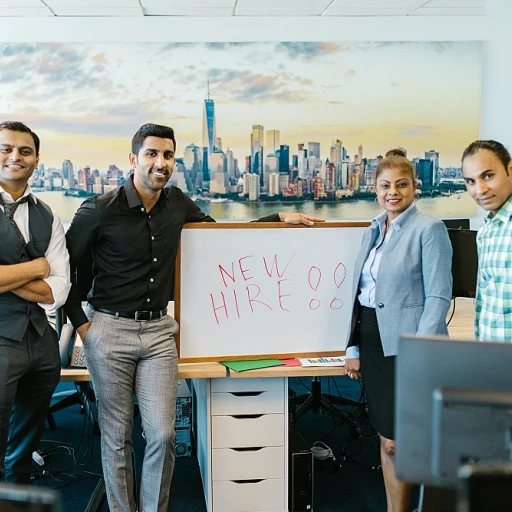
Understanding Ageism: A Hidden Workplace Challenge
Unveiling Ageism: An Overlooked Workplace Dilemma
Age discrimination in the workplace is a pressing issue that often goes unnoticed. This covert challenge affects various age groups, particularly older employees, who may face unjust treatment simply based on age. Instances of ageism can manifest in subtle yet significant ways, impacting both older workers nearing retirement and younger employees just starting their professional journey.
The implications of age-based discrimination are far-reaching. When an employer dismisses the skills and experience of older workers, that's ageism at play. On the flip side, the assumption that younger employees lack competence purely because of their age is equally damaging. Discrimination in employment based on age disrupts workplace harmony and can lead to wrongful termination or hindered career progression.
Employment laws exist to curb these tendencies, highlighting the ethical and legal responsibilities of companies to foster an inclusive work environment. Yet, despite these legal frameworks, ageism workplace occurrences persist. Understanding these challenges is the first step toward crafting effective affirmative action strategies that lead to age diversity and inclusion.
Common Examples of Ageism in the Workplace
Identifying Common Ageism Practices in Professional Settings
The professional realm often reveals subtle ageism patterns, where both older and younger employees face discriminatory behavior. Recognizing these biases is vital for fostering an inclusive work environment. Some common discrimination examples include:- Hiring Preferences: Employers often demonstrate a preference for younger employees, deeming them more technologically adept, overlooking older workers' experience-based competencies.
- Promotion Bias: Older employees might find their progression halted, with younger workers perceived as having more career longevity.
- Training Opportunities: Training sessions frequently target younger workers, sidelining older adults despite their willingness and ability to learn new skills.
- Retirement Pressures: Employers may subtly pressure employees nearing retirement age to resign, sparking wrongful termination cases.
- Age-Based Jokes: Remarks about someone being "too old" or "too young" for certain tasks manifest as age discrimination and create a hostile ageism workplace.
The Role of Human Resources Analytics in Identifying Age Bias
Leveraging HR Analytics to Uncover Age Bias
Human Resources analytics plays a crucial role in identifying age discrimination within the workplace. By analyzing data effectively, HR professionals can pinpoint specific areas where age bias may be present and take appropriate measures to address them. HR departments collect vast amounts of employee data that, when scrutinized, can reveal patterns of discrimination based on age. Here’s how HR analytics can help identify ageism in the workplace:- Analyzing Workforce Demographics: Examining the age distribution among employees can reveal if there are disproportionate numbers of older or younger employees in certain roles or departments.
- Recruitment and Hiring Patterns: Analyzing data from the recruitment process might highlight biases in the hiring of younger workers over older ones or vice versa.
- Employee Promotion and Development Trends: By reviewing promotion records and career development opportunities, employers can see if older employees are being overlooked compared to their younger counterparts.
- Turnover Rates by Age Group: Disproportionate turnover rates could indicate issues such as older employees being encouraged to take early retirement or resign due to a lack of advancement opportunities.
Strategies to Combat Ageism Using Data-Driven Insights
Leveraging Data for Ageism Mitigation
When tackling the pervasive issue of age discrimination in the workplace, leveraging data-driven insights is pivotal. Human Resources Analytics has the potential to provide employers with a comprehensive view of age-related trends and biases within their organization. This can be particularly effective in combating discrimination by enabling informed decision-making regarding hiring, promotions, and retention of both older and younger employees.- Identify Age Patterns: By analyzing datasets on job assignments, performance evaluations, and promotion rates, companies can identify any age-based discrepancies. Highlighting these patterns is essential to understand how age might be implicitly affecting employment outcomes.
- Assess Recruitment Practices: HR analytics allows employers to scrutinize recruitment channels and selection processes. By doing so, businesses can ensure that both older workers and younger employees are given fair consideration for job opportunities.
- Monitor Employee Turnover: Tracking the turnover rates of different age groups can reveal whether specific age categories are disproportionately affected by layoffs or resignations. This insight enables organizations to take proactive measures to retain diverse talent.
- Evaluate Performance Reviews: Data analytics can help companies assess whether performance reviews are impartial across different ages. This prevents ageism from influencing decisions about career development, compensation, and promotions.
- Implement Training Programs: With data insights, companies can identify if particular age groups are missing out on critical training initiatives. Addressing these gaps can help ensure all employees have equal opportunities for skill enhancement and growth.
Case Studies: Successful Mitigation of Ageism
Success Stories: Overcoming Age Discrimination
In recent years, several companies across various industries have successfully tackled age bias by integrating human resources analytics into their strategies. Employers who recognize the benefits of an age-diverse workforce can unlock a pool of talent that might otherwise be overlooked. Here are some noteworthy examples demonstrating the effectiveness of data-driven approaches in mitigating ageism in the workplace.- Tech Company Initiative: A leading technology company faced challenges with age diversity among its engineering staff. By incorporating HR analytics, they identified patterns where older employees were consistently overlooked for promotions. Armed with this insight, the company restructured its promotion criteria to emphasize experience and contribution over age, resulting in a more inclusive and motivated workforce.
- Retail Industry Case: A major retailer noticed a trend of age-based discrimination complaints, with older workers frequently citing unfair treatment compared to their younger counterparts. Through data analysis, the company unearthed biased practices at the store level. They responded by conducting targeted training sessions and implementing an age-inclusive policy framework. This not only improved employee morale but also replenished the talent pipeline with seasoned and younger workers alike, boosting company performance.
- Healthcare Provider's Approach: A healthcare provider encountered discrepancies in job assignments between different age groups. Using detailed analytics, they discovered that older employees were often relegated to less critical roles. The company responded by prioritizing role assignment based on skill and experience rather than age. This shift led to increased satisfaction and efficiency, highlighting the value of older employees in vital positions.
- Manufacturing Firm's Strategy: When an analysis revealed that older workers were subject to wrongful termination more often than their younger colleagues, a manufacturing firm took decisive action. By revising their employment policies and enforcing stricter adherence to anti-discrimination laws, they created a more equitable working environment. This enhanced diversity and reduced litigation risk while fostering a culture of mutual respect.
These success stories exemplify how companies can effectively leverage human resources analytics to combat age discrimination. By recognizing the challenges older employees face and taking informed actions, organizations can nurture a balanced and inclusive workplace for all age groups, paving the way for sustained growth and innovation.













